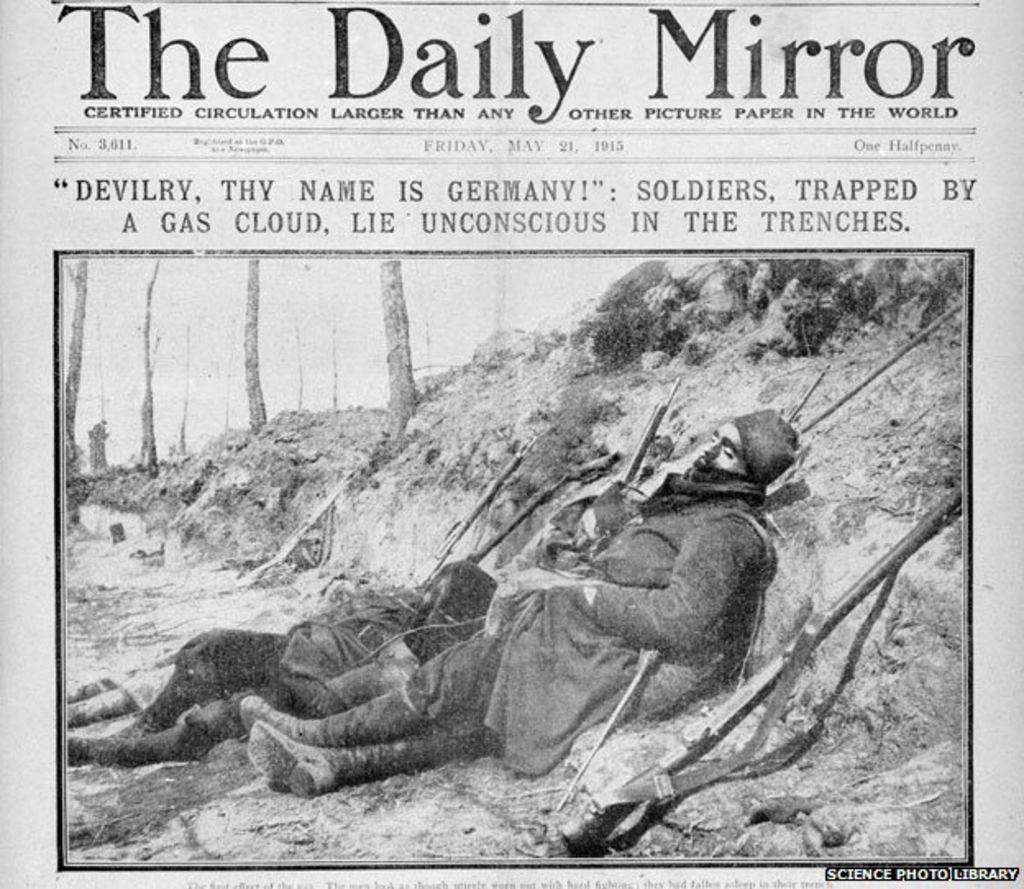 Tear Gas was the most frequently used gas in World War One. It was more of an irritant than it was fatal; it would cause nonstop tears to flow down soldiers' faces causing them to not be able to move on because they wouldn't be able to see. The active ingredient to tear gas was chloroacetone CH3COCH2Cl. This chemical compound causes the tear gas to turn dark yellow when it is exposed to light. Later, Germany fired 18,000 artillery shells containing xylyl bromide tear gas on Russian troops which failed because it froze.
Tear Gas was the most frequently used gas in World War One. It was more of an irritant than it was fatal; it would cause nonstop tears to flow down soldiers' faces causing them to not be able to move on because they wouldn't be able to see. The active ingredient to tear gas was chloroacetone CH3COCH2Cl. This chemical compound causes the tear gas to turn dark yellow when it is exposed to light. Later, Germany fired 18,000 artillery shells containing xylyl bromide tear gas on Russian troops which failed because it froze.1915- Chlorine Gas
 This was considered as the first killing gas; it was a powerful irritant that affected the eyes, nose, throat, and lungs. Chlorine gas could kill if large amounts were taken in. Because the chlorine gas is denser than the air, it would sink to the bottom of the trenches, so soldiers who stood seemed to be fine. Also, people who died off of doses of chlorine gas died because they were breathing too much in, therefore, people found that running away didn't help them.
This was considered as the first killing gas; it was a powerful irritant that affected the eyes, nose, throat, and lungs. Chlorine gas could kill if large amounts were taken in. Because the chlorine gas is denser than the air, it would sink to the bottom of the trenches, so soldiers who stood seemed to be fine. Also, people who died off of doses of chlorine gas died because they were breathing too much in, therefore, people found that running away didn't help them.
Phosgene
Phosgene was mixed with Chlorine gas to create a more deadly gas. This mixture was referred to as "White Star" because it was both odorless and colorless and therefore indetectable. During WW1, a total of 93,800 tons of chlorine gas was manufactured and 36,600 tons of chlorine gas.
1917- Mustard Gas
Mustard Gas, also known as Yellow Cross, was dangerous because once released, it stayed for months. It wasn't a killing agent, but the effects were pretty gruesome and painful: victims had blisters, their eyes became sore, and they would vomit. It caused internal and external bleeding and attacked the bronchial tubes, stripping off the mucous membrane.
1 comment:
Really interesting post!! Nicely explained how each of the gases work and its side effects.
Post a Comment